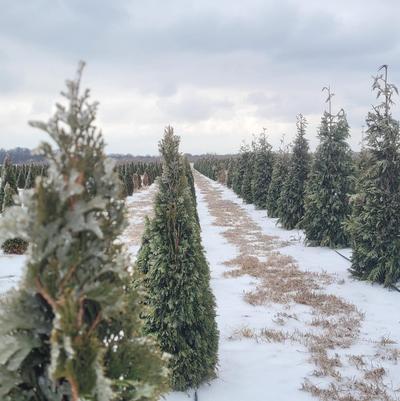What's So Great About the Ginkgo Tree?
Whats-So-Great-About-the-Ginkgo-Tree
Aptly named maidenhair tree for its ridged and fan shaped leaves, the ginkgo tree is tolerant of almost any growing conditions. It is a slow grower, but it can reach heights of 50 to 80 feet at maturity. In a good year, ginkgo trees have a beautiful golden-yellow fall color. This is an incredibly low maintenance tree as it does not have any major disease or pest problems and can tolerate almost any soil type.

Great might be an understatement. I must confess, I have always been partial to gingko trees. Their leaves are unlike any other tree in the landscape, but the more I learn about ginkgo trees, the more I realize how truly fascinating this tree really is.
Aptly named maidenhair tree for its ridged and fan shaped leaves, the ginkgo tree is tolerant of almost any growing conditions. It is a slow grower, but it can reach heights of 50 to 80 feet at maturity. In a good year, ginkgo trees have a beautiful golden-yellow fall color. This is an incredibly low maintenance tree as it does not have any major disease or pest problems and can tolerate almost any soil type.
Rewinding a few hundred million years, the ginkgo’s story begins. Originating in ancient China, the ginkgo tree has no living ancestors; it is the only one left of its kind. In the timesince it has been around, scientists estimate 200 million years based on fossil records, the genetics have changed very little. Because of this, it is often referred to as a ‘living fossil.’ Most organisms are constantly evolving and adapting to a changing environment, but not the ginkgo. Many speculate this is simply because the ginkgo didn’t have a biological need to adapt; they had things figured out from the beginning. Ginkgo trees experience almost no pest damage from insects, have a long reproductive period, and have a long lifespan in general. Ginkgo trees can live 1,000 years. A few trees in Japan and China are reportedly older than 3,000 years. Scientists attribute the combination of these biological super powers to the ginkgo’s virtually unchanged genetics.
Because of their ability to withstand most environmental conditions, ginkgo trees have earned themselves a lot of popularity, especially in urban settings. There is no denying the ginkgo is a tough tree. It tolerates compacted soil, acidic soil, salt, and pollution. The list is almost endless. Combined with its disease and pest resistance, the ginkgo is virtually indestructible. For these reasons, the ginkgo is often planted in cities, especially along streets. Not many trees can withstand the soil compaction and lack of oxygen associated with concrete sidewalks. The only downsides to planting ginkgo trees is that they grow very slowly. Oh, and the fruit has a smell somewhere between rotting flesh and vomit.
Anyone that has personally experienced the smell of ginkgo fruit will recall it with a look of genuine horror on their face. The fruits are small and round with a smooth orangeskin. The word ginkgo is derived from ‘kyo’ meaning apricot, which accounts for the small apricot-like fruits. The fruits contain butyric acid which is also found in animal fats and rancid butter, hence that lovely smell. Luckily for us, the ginkgo tree is dioecious, meaning that the female and male parts occur on separate plants. So only the female trees have the biological capability of producing fruit. Unfortunately, ginkgo trees do not begin fruiting until they have reached 20-30 years of age. Once you figure out your tree is female, its essentially too late. In an attempt to alleviate this issue, reputable nurseries will only sell male gingko trees. This makes the fruit less problematic unless you have an older tree already in your yard.
In China, ginkgo seeds were prized for the medicinal properties. However, in the United States, extract from the leaves has gained popularity for its supposed health benefits. Ginkgo leaf extract supposedly reduces inflammation, improves memory and brain function, and reduces anxiety. There are currently many scientific studies to determine the effects of gingko leaf extract and its affect on dementia and Alzheimer’s. So far, the results have not been very consistent and are subsequently inconclusive.
The funny thing about ginkgo trees is once you notice them, you can’t stop. If you are paying attention, you can find one on almost every street corner. After learning of the history of the ginkgo tree, I planted one in my yard almost immediately. Watching the tree grow and thrive, I feel like I’m growing a piece of our Earth’s history. In many ways, I am. Having survived in this world for so long, I’ve come to think of the ginkgo as a symbol of both strength and hope. Who wouldn't want that on their street corner?

